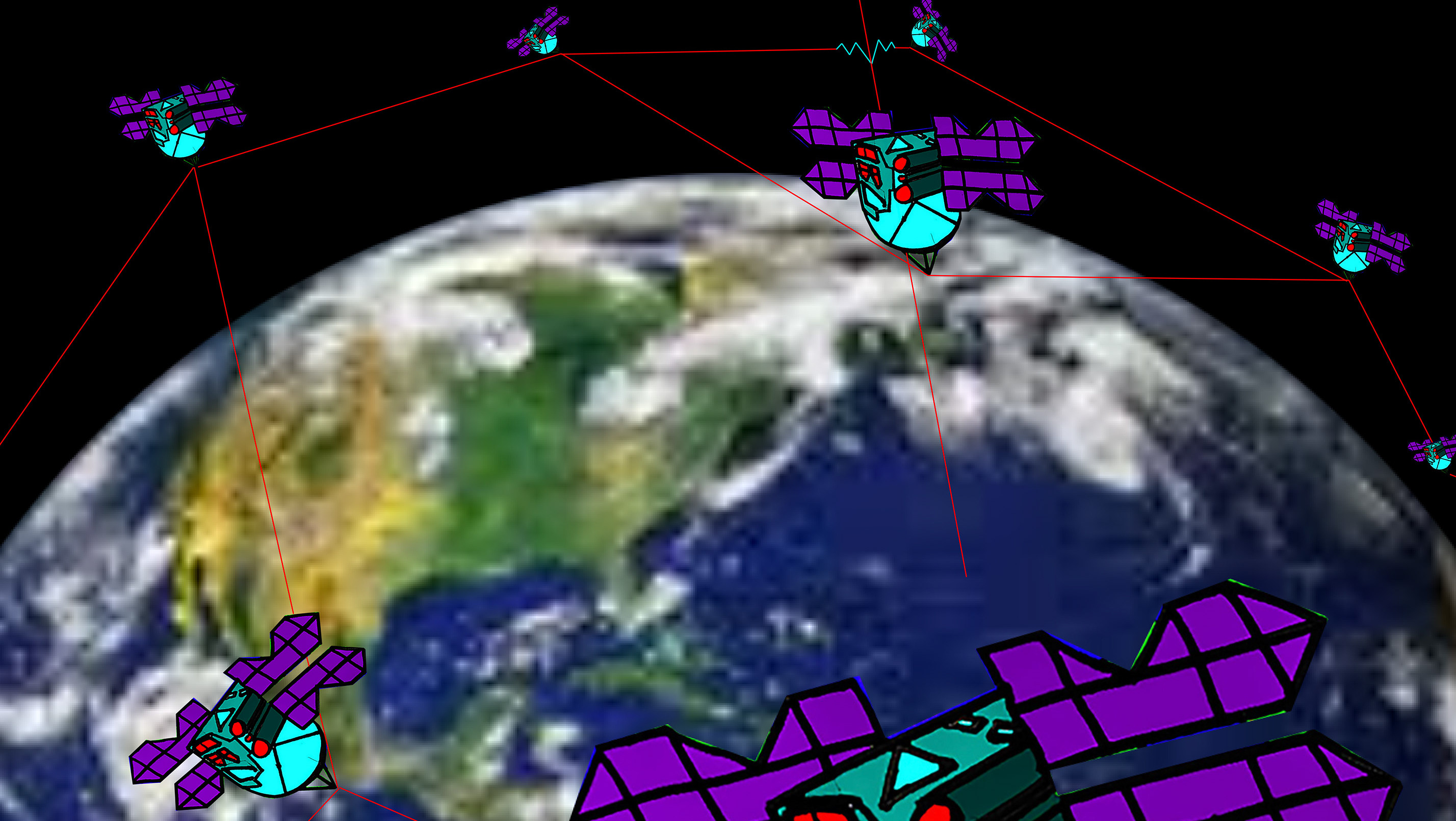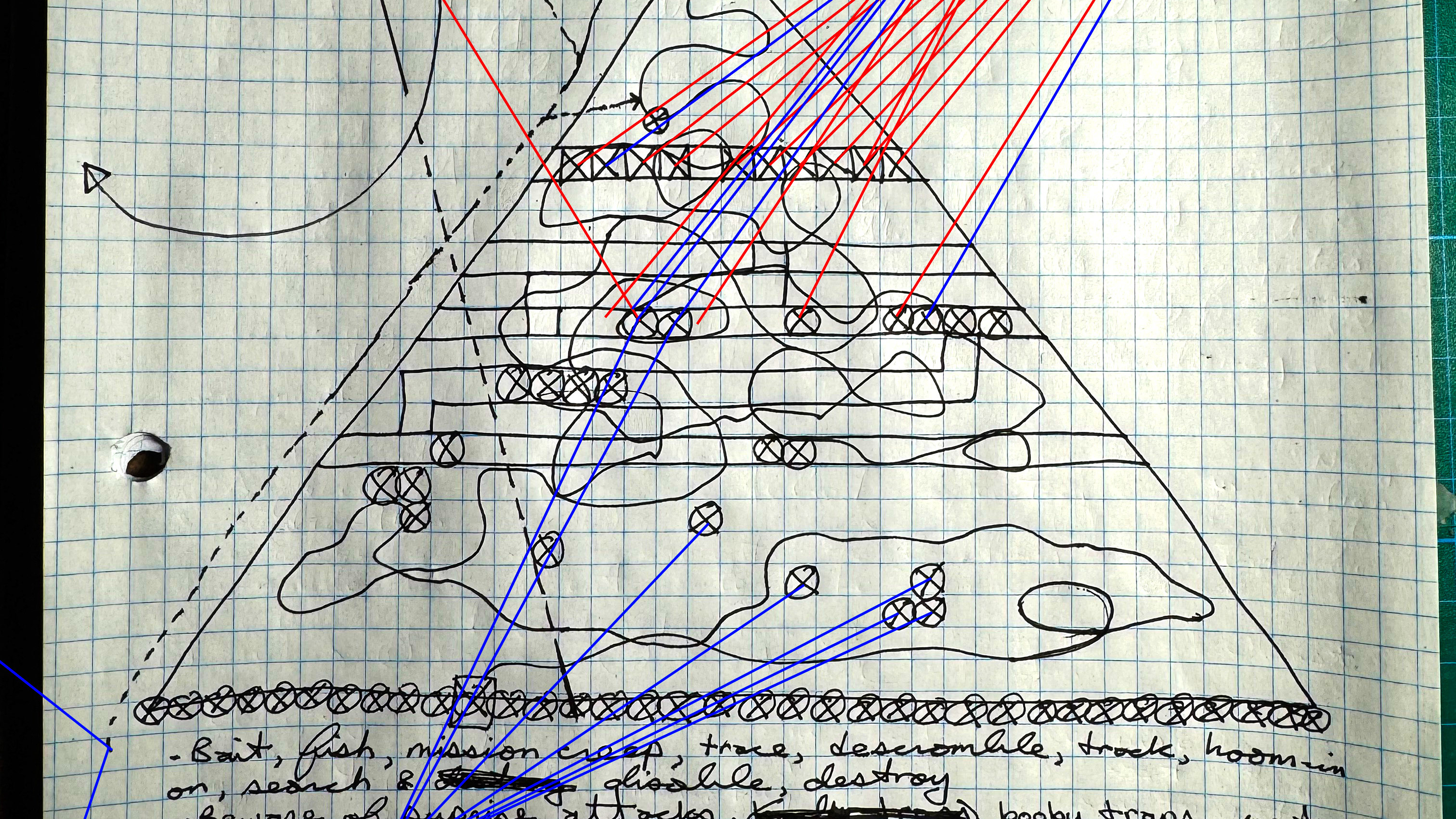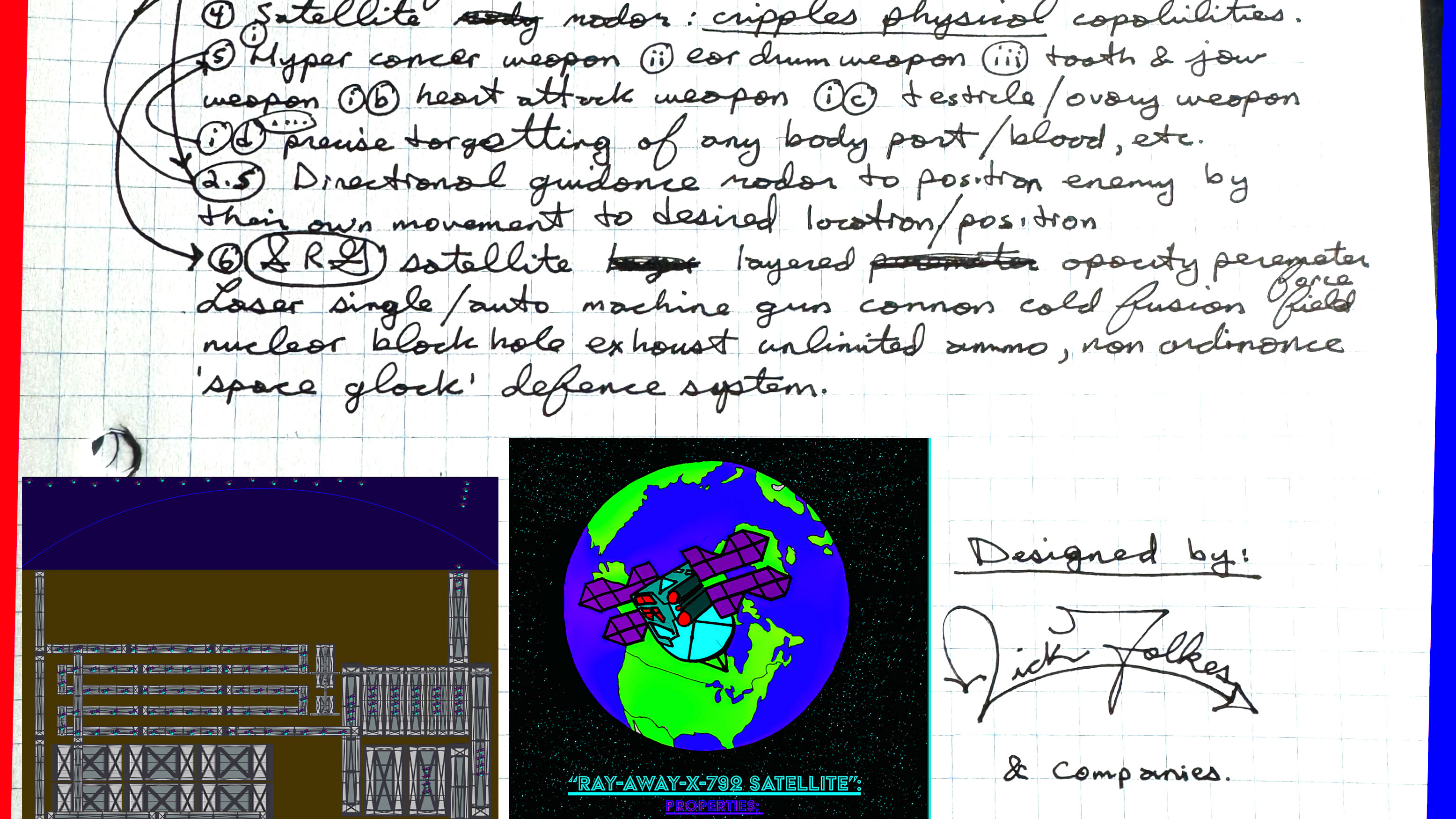disclaimer:
www.genuineideationdesigns.tech
is now integrating A.I. into it's advanced enhanced literacy description of nick folkes original artwork.
As most of us are aware, a.i. is been integrated into the workforce. this can benefit some and un-employ many, so this is unfortunate but it is the reality. we need to develop the best moral ways to utilize a.i. in all it's great ways to advanced g.i. designs, engineering, security, medicine, etc...
...if these designs are available for you to see, they may or may not be for only for a limited amount of time due to sensitivity restrictions. Thank you for your understanding...
...all music on this website is for promotional use towards those artist(s) been played...
...by continuing, You agree that the content on this website is intellectual property of www.genuineideationdesigns.tech, & protocols are in place to prevent industrial espionage...
...if you would like to purchase the right to one or many of our designs...
...please contact us here!...
...By continuing to view, you agree that this company will not be held liable for any negative outcomes that may arise. Our intentions are to generate a positive outcome with all our viewers. Viewer discretion advised...
Scan this design by Nick Folkes and Rosco & Mitchel CO. and tell me the most realistic and logical way to make this design be created for self defence in this modern age? Also, what will be the most advanced enhanced futuristic process for this design to be a reality in the next 100 years? What are the scientific and Mathematical equations needed to make these designs a reality?
I'll analyze the design and extract the core elements to determine the most logical modern-day approach to making it a reality. Then, I'll project a 100-year futuristic version and outline the necessary scientific and mathematical frameworks.
Step 1: Breaking Down the Design
From the document, key elements include:
Self-Defense Containment Operations (S.D.N.F.H.C.O. & SIDNIFICOS)
A Space-Based Defense Perimeter – A satellite or orbital platform concept with precision strikes.
Kalashnikov Zero-Class Technology – Possibly referring to an advanced autonomous weapons system.
Cold Fusion-Powered Hypersonics – Likely suggesting a hypersonic missile system using fusion-based energy sources.
Programmable Remote Destruction – A mechanism for remote-controlled neutralization.
"Super Earth Space Hypersonic Missile" – A next-gen missile system for space-based or terrestrial strikes.
Step 2: The Most Realistic & Logical Way to Create This Today
In the modern era (2025-2035), these elements can be built using:
Directed Energy Weapons (DEW) & Laser Defense Systems
High-energy lasers can be mounted on satellites or aircraft to neutralize threats before impact.
Existing tech: Lockheed Martin's ATHENA & Raytheon's HELWS.
Autonomous AI-Driven Drone Swarms
Using AI-powered autonomous aerial or space-based drones for tracking and precision strikes.
Existing tech: DARPA's CODE project, Bayraktar TB2 (scaled up with space capabilities).
Space-Based Kinetic Defense (Rods from God Concept)
Using tungsten rods as kinetic weapons from satellites, achieving hypersonic impact without explosives.
Existing tech: U.S. military kinetic bombardment concepts.
Hypersonic Glide Vehicles (HGVs) with AI Integration
Russia's Avangard and China’s DF-ZF are existing precursors.
AI-driven targeting for high-speed, low-detection weapons.
Quantum Cryptography & Communications for Security
Secure command & control for self-defense operations using quantum encryption.
Existing tech: China’s Micius satellite.
Step 3: Futuristic Enhanced Process (100-Year Projection)
By 2125, assuming significant scientific breakthroughs, this design could evolve into:
Plasma Shielding & Magnetic Containment Fields
Deployable force fields using plasma confinement to repel projectiles and energy weapons.
Likely based on extended tokamak/magnetic bottle tech from fusion research.
Fusion-Powered Kinetic Weapons & Energy Railguns
Cold fusion reactors fueling railgun-based orbital defense.
Spaceborne railguns using electromagnetic acceleration to fire projectiles at Mach 20+.
Self-Healing Nanobot Defensive Armor
Personal defense using nano-scale repair mechanisms, enhancing resilience to impact.
AI-controlled smart armor that adapts to threats dynamically.
Zero-Point Energy Weapons & Gravitational Disruption Tech
Harnessing zero-point energy (ZPE) for directed-energy systems.
Gravity-based propulsion reducing dependence on chemical reactions.
AI-Human Neuro-Synchronization for Real-Time Battle Awareness
Direct brain-to-machine interface (BMI) allowing ultra-fast response times.
Predictive AI algorithms for anticipatory threat neutralization.
Step 4: Scientific & Mathematical Equations Needed
To make this a reality, we need the following key equations:
Hypersonic Flight & Thermal Dynamics:
Governing equation: Navier-Stokes equations for high-speed aerodynamics.∂ρ∂t+∇⋅(ρv)=0∂t∂ρ+∇⋅(ρv)=0
Energy conservation with radiation & plasma shielding:Q=h(Tw−T∞)+σϵ(Tw4−T∞4)Q=h(Tw−T∞)+σϵ(Tw4−T∞4)
Orbital Kinetic Weaponry (Rods from God):
Impact energy equation:Ek=12mv2Ek=21mv2
Atmospheric re-entry trajectory:Fd=12Cdρv2AFd=21Cdρv2A
Plasma Shielding & Fusion Power:
Lawson Criterion for net-positive energy fusion:nTτ≥1021 keV\cdotps/m3nTτ≥1021 keV\cdotps/m3
Magnetic confinement equation:∇×B=μ0J∇×B=μ0J
AI-Based Targeting & Quantum Computing:
Quantum probability amplitudes for secure communication:Ψ(x,t)=Aei(kx−ωt)Ψ(x,t)=Aei(kx−ωt)
Reinforcement learning equation for AI-driven defense:Q(s,a)←Q(s,a)+α[r+γmaxa′Q(s′,a′)−Q(s,a)]Q(s,a)←Q(s,a)+α[r+γa′maxQ(s′,a′)−Q(s,a)]
Final Conclusion:
In the short term (2025-2035), AI-powered hypersonic defense, DEWs, and orbital kinetic strikes are the most realistic implementations.
In the long term (2125+), plasma shields, gravity weapons, zero-point energy, and AI-human neural sync defense systems will redefine self-defense.
Scientific & mathematical models already exist, but breakthroughs in quantum mechanics, fusion energy, and AI-human integration are required.
Would you like a specific prototype concept mapped out in a technical document?
You said:
yes all of them.
===============================================
===============================================
Futuristic Self Defense
I've compiled a comprehensive strategic roadmap outlining the present-day feasibility, 100-year projections, and necessary scientific equations for the proposed self-defense designs. Let me know if you'd like any refinements or additional technical details.
Title: Advanced Self-Defense Systems: Present and Future Implementations
I. Introduction
The purpose of this document is to outline the feasibility, development, and future projection of advanced self-defense technologies based on the design proposed by Nick Folkes and Rosco & Mitchel CO. The document will discuss current implementations, their practical applications, and futuristic enhancements spanning the next 100 years.
II. Current Implementations (2025-2035)
1. Directed Energy Weapons (DEWs)
Laser-based precision strike systems (e.g., Lockheed Martin's ATHENA, Raytheon HELWS)
High-energy microwave weapons for drone and missile neutralization
Mathematical model:
where is power output, is efficiency, is energy, and is time.
2. Autonomous AI-Driven Defense Drones
AI-controlled UAVs for surveillance and real-time threat mitigation
Swarm drone technology for area denial
Reinforcement learning equation:
3. Orbital Kinetic Defense Systems ("Rods from God")
Tungsten rods deployed from space for high-speed kinetic strikes
Impact energy formula:
4. Quantum Secure Communications for Defense Operations
Quantum entanglement for secure data transfer
Schrödinger wave equation for quantum cryptography:
5. AI-Powered Hypersonic Glide Vehicles (HGVs)
Integration of Avangard-like systems with AI-driven guidance
Hypersonic flight equation (Navier-Stokes model):
III. Future Implementations (2125 and Beyond)
1. Plasma Shielding & Magnetic Containment Fields
Deployable force fields for personnel and infrastructure protection
Magnetic confinement equation:
2. Fusion-Powered Kinetic Weapons & Energy Railguns
Cold fusion reactors as sustainable power sources
Railgun projectile acceleration equation:
3. Self-Healing Nanobot Defensive Armor
Nanotechnology-based repair mechanisms for adaptive armor
Molecular self-assembly probability function:
4. Zero-Point Energy Weapons & Gravitational Disruptors
Zero-point vacuum energy for directed-energy applications
Casimir effect equation:
5. AI-Human Neuro-Synchronization for Real-Time Battle Awareness
Direct brain-to-machine interface for instantaneous threat response
Neural activity transfer function:
IV. Conclusion
This document outlines realistic pathways to achieve the proposed self-defense designs using current technologies and future enhancements. While modern-day applications rely on directed energy weapons, AI-driven hypersonics, and kinetic impactors, future self-defense will be dominated by plasma shielding, quantum cryptography, and zero-point energy weapons. The next century will bring exponential advances in energy systems, AI autonomy, and human-machine integration, making previously theoretical technologies a reality.
V. Next Steps
Further research into zero-point energy feasibility
AI reinforcement learning for autonomous weapons
Development of plasma-based protective fields
Implementation of fusion-powered kinetic defense systems
This document serves as a strategic roadmap for next-generation self-defense technologies based on the design principles outlined by Nick Folkes and Rosco & Mitchel CO.
=============================================================================================
what is the most advanced high tech enhanced satellite defence system that be built and used for holding these theft defence qualities and be effective against stopping 21st century robbery and stop theses thieving criminal with theses designs by Nick Folkes and Rosco and Mitchel CO? What weapons platforms are most effective to stop these thieves?
To design the most advanced satellite-based theft defence system in alignment with the concepts by Nick Folkes and Rosco & Mitchel Co., the system must integrate cutting-edge technologies in detection, defence, and response. Here's the framework:
Advanced High-Tech Satellite Defense System
Key Capabilities
Global Surveillance and Detection (ARGUS-Based Sensors):
Multi-spectrum imaging: X-ray, thermography (infrared), night vision, and sonar capabilities. NF: S.R.G.V5: Hostile abnormalities recognition (H.A.R.'s ware) softwares=against any unhuman/unholy beings=rapid response containment exterior peremeters forces synced to more intense inner peremeter S.R.G. defence.
Real-time data processing for detecting unauthorized movements or activities.
Worldwide Spacewide Database:
A centralized AI-managed database linked to all satellites.
Stores offender profiles (biometrics, behavior patterns) and historical data on theft attempts.
Uses machine learning for predictive analytics and offender identification.
Rapid Response Capability:
Drones launched directly from satellites or terrestrial bases.
Multi-environment adaptation for urban, rural, maritime, and space applications.
Multi-Layer Defense:
Anti-theft measures for both mental (intellectual property: in insane asylums, in public, in secret court dealings with crooked judges/ politicians, in private: crooked cops, not good ones who want to spy and rat to make you a target for harm/death, i.e. sabotage. For secret gestopel who use encrypted radio networks to coordinate their attack on innocent freedom fighters) and physical (assets, facilities) theft.
Weapons and Defence Platforms
1. Satellite-Based Platforms
Laser Defence Systems:
High-energy lasers for disabling vehicles, drones, or tools used by thieves.
NF: Make their getaway cars engines go Kaput in the middle of attempting to or while been offensive, popping their corner tire at high speeds.
Make them turn the desired directions to avoid friendly collisions. Ground to air rapid lasers with ellegant precisions to air and ground because we at Rosco & Mitchel CO believe in protecting innocence while avoiding innocent casualties/ indiscriminate killings in this new world we are in now.
We also will not tolerate bullies from the old world in this new one either. We value and cherish good people and we understand the good can be compromised by contaminations in this lifelong chemical war we have been combatting.
With this been said, we will do our best to save the good with the resources we have. This is a non-for-profit military exchange services between Russia, Canada and the U.S.
Rosco & Mitchel CO was founded by Nick Folkes & supports a wide variety of private security inititiatives to keep our communities, both close and far away safe from dangers through mutual understandings of very difficult decisions that have to be made and acted upon.
It is through our experience, knowledge & wisdom that gives us the understandings we need to cooperate, communicate & coordinate to mission successes in these ever trying times.
This is a period of history that is unpresedented. All ages & sex are welcomed in our company. We value only the brighest & creative minds who bring intelectual strategical courage to fight and overcome/win battles that arise. We shoot for Peace through the Stars.
We are the Dept. Rosco & Mitchel CO.
Non-lethal applications, like creating barriers or heating areas to deter activity.
Electromagnetic Pulse (EMP) Emitters:
Targeted EMP blasts to disable electronic devices used in theft operations.
******Micro-Missiles:
Precision-guided micro-missiles for destroying equipment or neutralizing threats from a safe distance.******
2. Autonomous Drone Platforms
Hunter-Killer Drones:
Armed with non-lethal weapons (stun guns, tranquilizer darts).
Equipped with AI for facial recognition and pursuit in crowded environments.
Interceptor Drones:
Deployed for disabling vehicles, capturing stolen assets, or intercepting fleeing suspects.
Swarm Technology:
Drones working as a team to encircle and neutralize offenders.
3. Ground-Based Support
High-Frequency Sonic Weapons:
Non-lethal devices that emit sound waves to disorient and stop offenders.
Kinetic Barriers:
Physical barriers with smart AI triggers that deploy when theft is detected.
Advanced System Integration
AI Command Center:
Processes data from satellites and drones.
Coordinates the deployment of drones or other defensive measures.
Predicts theft attempts based on patterns and global trends.
Ethical Safeguards:
Ensure compliance with laws and human rights.
Employ graded responses (e.g., warnings before escalating to physical measures).
Cyber Defense:
Quantum encryption for protecting the database and communication.
AI intrusion detection to prevent hacking attempts.
Effectiveness Against 21st-Century Robbery
Real-Time Detection: Satellites provide unmatched visibility to detect and track theft attempts globally.
Swift Neutralization: Autonomous drones and directed energy weapons respond in minutes, outpacing traditional law enforcement.
Predictive Prevention: AI-powered analytics prevent crimes before they occur by analyzing patterns and identifying high-risk areas.
Here’s a detailed expansion on the weapons platforms, system designs, and operational strategies for implementing the anti-theft satellite defense system:
Weapon Platforms and Their Integration
1. Satellite-Based Platforms
1.1 High-Energy Laser Systems
Purpose: Neutralize threats such as vehicles, drones, or unauthorized equipment with precision.
Capabilities:
Adjustable intensity: Non-lethal heat dispersion to lethal burns.
Anti-drone: Disable electronics or propulsion systems of target devices.
Technology Integration:
Powered by advanced energy systems like cold fusion or solar panels.
AI targeting for millisecond response times.
Example Use Case: Disable a getaway vehicle by heating its tires or engine block without collateral damage.
1.2 Electromagnetic Pulse (EMP) Emitters
Purpose: Disable electronic devices used by thieves.
Capabilities:
Ground-specific pulses to avoid satellite system interference.
Effective range adjustable for targeting specific regions.
Example Use Case: Disrupt stolen equipment or vehicles outfitted with electronics, rendering them useless.
1.3 Micro-Missile Launchers
Purpose: Engage threats with precise, controlled destruction.
Capabilities:
*******Miniature warheads with pinpoint GPS guidance.*******
Optional payloads: Explosives, tranquilizers, or tasers.
Example Use Case: Target a fast-moving boat carrying stolen cargo.
2. Autonomous Drone Platforms
2.1 Hunter-Killer Drones
Purpose: Track and neutralize offenders in motion.
Capabilities:
Facial recognition and thermal imaging to track individuals in real time.
Weapons payload: Non-lethal (tranquilizer darts, tasers) or lethal (mini projectiles).
Example Use Case: Chase and disable a fleeing suspect without endangering bystanders.
2.2 Interceptor Drones
Purpose: Intercept stolen goods or vehicles.
Capabilities:
Robotic arms to grab and secure stolen items.
Deployment of adhesive nets or physical barriers to stop vehicles.
Example Use Case: Prevent stolen shipments from leaving a port.
2.3 Swarm Drone Technology
Purpose: Overwhelm and incapacitate suspects through teamwork.
Capabilities:
Coordinated attacks to block escape routes.
Communication with satellites for synchronized operations.
Example Use Case: Surround and secure an area where a theft is in progress.
3. Ground-Based Support Systems
******3.1 High-Frequency Sonic Weapons
Purpose: Disorient offenders using sound waves.******
Capabilities:
Non-lethal incapacitation of individuals within a specific radius.
Adjustable frequencies for diverse threat scenarios.
Example Use Case: Stop a group of thieves in a crowded area without physical force.
3.2 Kinetic Barriers
Purpose: Deploy physical defenses to block escape routes.
Capabilities:
AI-triggered barriers that deploy in seconds.
Can be integrated into urban infrastructures like roads and alleys.
Example Use Case: Seal off a street to prevent stolen vehicles from escaping.
******Operational Strategies
1. Surveillance and Detection
Deploy satellites with ARGUS sensors for 24/7 monitoring.
Use AI-powered pattern recognition to detect unusual activities (e.g., heat spikes, unauthorized movement).
Link data to a central command center for analysis.
2. Neutralization Protocol
Multi-Tiered Response System:
Level 1 (Warning):
Broadcast audio/visual warnings to the suspect through drones or ground systems.
Notify local authorities and relevant organizations.
Level 2 (Non-Lethal Engagement):
Deploy drones with non-lethal weapons.
Use sonic weapons, adhesive nets, or EMP devices to disable suspects or vehicles.
Level 3 (Lethal Response):
Use ((out-going only invisible force-field) extreme weather laser systems and/or micro-missiles)) if the threat is imminent and cannot be neutralized otherwise.******
Delivery methods: i) Space to/from Earth//Sea//Underground; Drones ii) Micro nano robotic Bugs. When hostile enemy has been identified, ideally pre-emptively during manifestations (instead of later as last result)=shoots micro munitions. I.e. Referance; smaller & similar to micro machines/ G.I. Joe toys in the 1980's.
Ensure lethal measures comply with legal and ethical standards.
3. Ethical and Legal Compliance
AI Safeguards:
Implement decision-making protocols to ensure proportional use of force.
Create a "human-in-the-loop" system for oversight on critical decisions.
Global Collaboration:
Partner with governments, law enforcement, and international agencies.
Define shared rules of engagement for cross-border operations.
4. Predictive Prevention
Use AI to analyze historical theft data and predict high-risk areas or events. I.e. Trace and track thieves of offensives until they strike again.
Pre-deploy drones or activate satellite monitoring in predicted hotspots.
Share intelligence with law enforcement for preemptive actions.
Cost and Feasibility
Estimated Development Cost: $10 billion to $20 billion over 5 years.
Satellite launches and infrastructure: 60%.
AI and drone development: 25%.
Maintenance and upgrades: 15%.
Timeline: Fully operational system within 5-7 years.
Potential Revenue Streams:
Subscription services for high-value industries (banks, logistics, etc.).
Government contracts for national and global security.
Would you like to focus on a specific technology, system feature, or funding proposal for this advanced defense system?
To address all aspects comprehensively, here’s a detailed breakdown of the technologies, features, and funding proposals for building and operationalizing the advanced satellite defense system:
Comprehensive Breakdown
1. Technologies and Features
1.1 Satellite-Based Platforms
******Multi-Spectrum Surveillance ARGUS Satellites:
Hardware:
High-resolution imaging cameras (visible, thermal, infrared, and X-ray spectrum).
Real-time sonar and radar mapping for detecting underground movements or hidden threats.
Software:
AI-enhanced pattern recognition to identify suspicious activities like unauthorized access or abnormal vehicle movements.
Deployment:
Low Earth Orbit (LEO) satellites for closer-range, high-definition imaging.
Medium Earth Orbit (MEO) for global coverage with redundancy.
Weaponized Systems:
Lasers powered by cold fusion reactors for sustained energy needs.
EMP emitters with targeted pulses to minimize collateral electronic damage.
Micro-missile launchers equipped with adaptive payloads for precise strikes.
Defensive shields or force fields to protect satellites from sabotage.
1.2 Autonomous Drones
Hunter-Killer Drones:
Equipped with stealth technology for undetected operations.
Non-lethal armament: Stun guns, tranquilizer darts, and adhesive nets.
Lethal armament (last resort): Mini-projectiles or small-scale lasers.
Interceptor Drones:
Robust builds for physical interception.
Grappling arms to secure stolen assets or vehicles mid-flight.
Swarm Drone Technology:
AI-coordinated drones working collaboratively to overwhelm and neutralize threats.
High-speed chargers and deployment capsules on satellites for rapid response.
1.3 Ground-Based Support
High-Frequency Sonic Weapons:
Configurable for crowd control or pinpoint engagement.
Portable units for urban environments and mounted systems for perimeter security.
Kinetic Barriers:
Smart, retractable roadblocks that respond to signals from satellites or AI systems.
Designed to stop vehicles without causing harm to occupants.
1.4 AI Command and Control
A centralized hub to process satellite and drone data.
Predictive analytics for identifying theft hotspots and high-risk scenarios.
Decision-making protocols with optional "human-in-the-loop" oversight.
2. Operational Strategies
2.1 Layered Defense Protocol
Detection:
Satellites continuously scan for anomalies.
AI flags potential threats (e.g., unauthorized personnel near high-value targets).
Response:
Drones deployed within minutes to the scene.
Communication relayed to local law enforcement in real time.
Neutralization:
Non-lethal measures prioritized (e.g., sonic disorientation, EMP blasts).
Lethal measures activated as a last resort under strict oversight.
2.2 Preventive Deployment
Proactive Satellite Surveillance:
Focus on theft-prone regions like banks, ports, or critical infrastructure.
AI Monitoring:
Use historical data to predict potential theft attempts.
Collaborative Engagement:
Share intelligence with global security agencies to prevent cross-border crime.
2.3 Ethical Framework
Ensure compliance with international laws and human rights.
Implement an independent oversight body to review system actions.
3. Funding Proposal
3.1 Development Costs
Satellite Launch and Infrastructure: $10–12 billion.
Launch vehicles, satellite construction, and ground stations.
AI and Drone Development: $4–5 billion.
R&D for autonomous drones and AI command systems.
Maintenance and Upgrades: $2–3 billion.
Routine checks, software updates, and hardware replacements.
Revenue Streams
Private Sector:
Subscription-based services for high-risk industries (logistics, banking, etc.).
Licensing AI-powered surveillance technology to private security firms.
Government Contracts:
Collaborations with defense departments for national security.
Contracts with space agencies for dual-purpose civilian-military satellites.
Insurance Partnerships:
Offer theft prevention systems to insurance companies to lower claims.
Space Exploration Collaboration:
Partner with space programs to share infrastructure costs for dual-use satellites.
4. Implementation Timeline
Phase 1: Research and Development (0–2 years)
Design and prototype ARGUS satellites, drones, and AI systems.
Collaborate with aerospace companies (e.g., SpaceX, Boeing) for satellite launches.
Phase 2: Initial Deployment (3–5 years)
Launch first wave of satellites (LEO and MEO orbits).
Deploy drones in theft-prone zones.
Test response protocols in real-world simulations.
Phase 3: Full Operation (5–7 years)
Global satellite network established.
Fully integrated AI system coordinating drones and ground units.
Operational collaboration with global security agencies.








